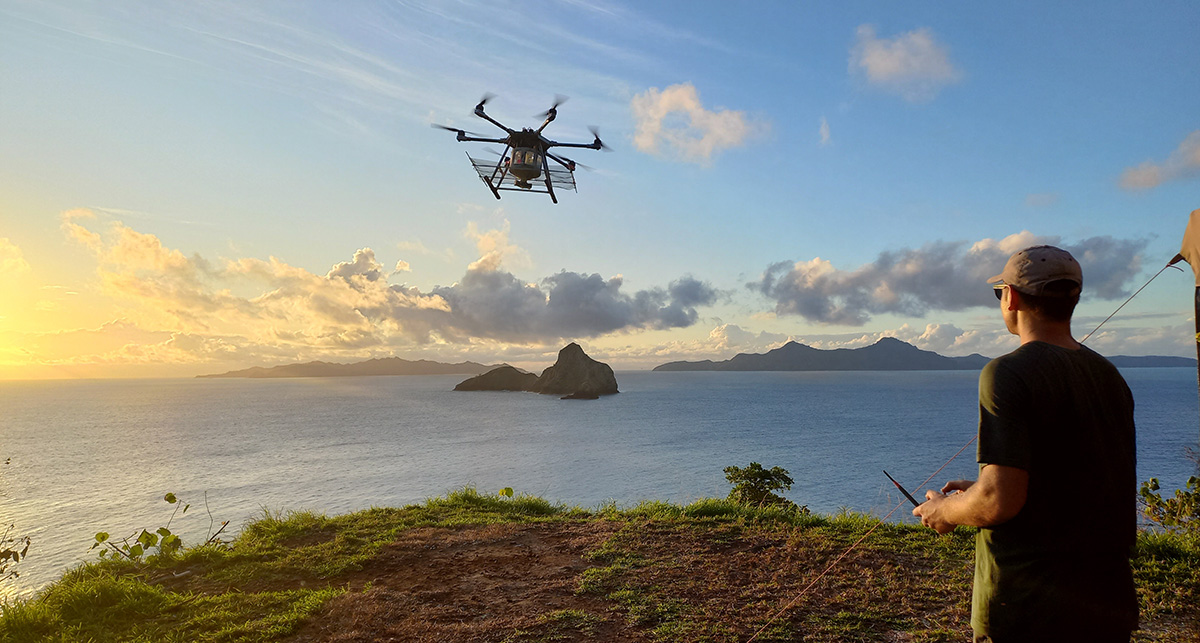Island Conservation: A Comprehensive Guide to Safeguarding Biodiversity Hotspots with Drones, Science, and Passion
If you’ve ever imagined untouched islands filled with vibrant birdlife, rare plant species, and the gentle soundtrack of wind and waves, you’re naturally inclined towards island conservation, even if unknowingly! This article delves into how cutting-edge science, dedicated teams, and, notably, drones are transforming the prospects for some of the planet’s most valuable habitats.
Why Islands Matter: Nature’s Precious Jewels Facing Threats
Islands cover a mere 5.3% of Earth’s land area but astonishingly host 20% of the globe’s plant, mammal, and reptile species. These islands act as evolutionary labs, supporting iconic animals like the kiwi, Galápagos tortoise, and flightless cormorant. However, islands are also home to 45% of all IUCN Red List endangered species due to invasive species such as rats, cats, and goats that have been introduced via ships and planes, wreaking havoc on vulnerable island ecosystems.
Fact: Eradicating these invaders often proves the quickest and most reliable method to prevent current extinctions.
Island Conservation: The Vanguard Organization
Island Conservation (IC) stands as the sole international non-profit organization with a mission to restore islands for nature and people worldwide. Founded in 1994 by Dr. Bernie Tershy and Dr. Don Croll, IC operates across biodiversity hotspots from the Caribbean to the Pacific, engaging with local communities, governments, and scientists.
- Headquarters: Santa Cruz, CA, with field locations such as New Zealand, Chile, and Hawaii.
- Major Achievements: Restored over 63 islands, benefiting more than 1,170 populations of 460+ species and subspecies.
- Revenue: $8.7 million in 2023, illustrating robust backing and commitment.
Their Core Strategy
- Invasive species eradication: With a focus on vertebrates like rats, cats, and goats.
- Science-driven initiatives: Monitoring post-restoration and sharing methods globally.
- Community collaboration: Partnering with Indigenous groups, NGOs, and government entities in every project.
Real-life example: On one island in New Zealand, removing rats resulted in a resurgence of seabird populations, boosting both tourism and local morale—a triumph for both nature and the community.
The Impact of Drones in Island Conservation
It’s time to explore how drones, beyond their roles in creating stunning wedding videos or TikTok hits, are making their mark in island conservation.
The Advancement of Drone Operations
IC is leading the charge in utilizing heavy-lift drones to accurately distribute bait in steep cliffs and dense forests, areas difficult for humans or helicopters to reach. This approach results in more efficient, safer, and eco-friendly operations, crucial when every creature counts.
Drone applications include:
- Heavy-lift drone baiting: Ideal for removing invasive rats/mice where helicopter use is not viable.
- Remote monitoring: Observing wildlife, mapping vegetation, and ensuring the protection of non-target species.
- Data transparency: Providing real-time data and mapping to scientists and community partners.
Pro tip: The new Drone Operations Manager position at IC focuses on scaling these drones’ operations globally, developing fleets, and training personnel for significant impact.
Beyond Eradication: A Holistic Restoration Approach
IC’s efforts extend well past simple eradication:
- Revitalizing native flora and fauna: This includes replanting rare tree species or reintroducing threatened birds.
- Marine-terrestrial integration: Island restoration often stimulates recovery in nearby coral reefs and fisheries.
- Human enrichment: Healthier islands provide enhanced local livelihoods through eco-tourism, fishing, and increased resilience to climate change.
The Broader Perspective
Island Conservation’s strategies support 13 UN Sustainable Development Goals (SDGs) and 42 specific targets, addressing biodiversity, climate adaptation, health, economic growth, and local partnerships.
Scientific and Ethical Implications
Restoring islands often involves difficult moral decisions, such as eradicating entire invasive species populations for the greater good.
“Does mankind have the right to remove one species to save others?”
Research indicates that removing invasive animals from just 169 islands could improve the outlook for nearly 10% of the world’s most endangered terrestrial vertebrates. The stakes are colossal, and discussions continue, notably in literature like Battle at the End of Eden.
Innovation and Team Dynamics in Mission Accomplishment
Island Conservation’s success is as much about the people as the methods:
- Field scientists facing storms, harsh seas, and extended isolation in campaigns.
- Community liaisons building trust with local and Indigenous communities.
- Technological pioneers: Encompassing data scientists to drone pilots, innovation underpins every project.
**Interested in joining?** IC is continually recruiting for roles like drone pilots and field staff, unifying biologists, logistics experts, and tech enthusiasts under a shared mission.
The Business and Regulation of Conservation Drones
Drone conservation is strictly regulated, not a lawless endeavor:
- Drone operators require certification and adherence to specific flight rules (like those by the FAA in the US).
- Operations necessitate thorough preparation: Including buffer zones, emergency protocols, and post-flight reporting.
- IC is developing business models: With strategic alliances and contract services ensuring financial sustainability and expanding reach.
Success Narratives: Islands Revitalized
Let’s celebrate a few triumphs:
- Rábida Island (Galápagos): Rat removal led to a significant increase in Darwin’s finch populations.
- Anacapa Island (California): Native seabirds, once devastated by rats, regained prominence following eradication projects.
- South Pacific islands: Entire communities now flourish through eco-tourism after invasive goats and rats were eradicated.
In each case, you’ll find community members, scientists, and drone technicians collaborating—demonstrating that island conservation is as much about people as it is about wildlife.
The Path Ahead and Ways to Contribute
Conservation is a long-term endeavor. Challenges such as climate change, new invasions, and contentious decisions ensure a constant need for progress and learning.
How you can help:
- Partner or support organizations like IC.
- Spread awareness (share this article, join a webinar, or initiate a school project).
- Train as a drone pilot or conservation technology expert—a growing job market.
- Travel responsibly: Visit restored islands and support local communities.
Maintain curiosity. Every revitalized island is a beacon of hope—a precious commodity for us all.
Conservation with a Light Heart
- Did you know? The largest rodent eradication via drone occurred in 2023 on a remote Pacific atoll, capturing global attention on YouTube!
- Pop culture trivia: Remember the “rat battle” level in your favorite game? Island conservation mirrors that but with more strategic elements.
- Meme potential: “When drones are deployed to save birds but end up snapping photos of curious seagulls.”
Meet the Team: Our Core is Passion for Islands
At IC, we are a unique collective: biologists by trade, adventurers by nature, and drone enthusiasts by requirement. We exchange tales of arduous goat pursuits and notoriously bad field coffee. Our peak satisfaction? Observing beaches brimming with rare birds where once there was silence.
We recognize that conservation thrives when everyone—from local fishermen to urban students to science influencers—feels integral to the solution.
Conclusion: Embark on the Adventure of Island Conservation
In islands, opportunities are endless and challenges significant. Thanks to pioneering science, devoted individuals, and an expanding fleet of conservation drones, biodiversity is gaining ground. Whether as a prospective drone operator, nature aficionado, or inquisitive traveler, there’s a place for you in this worldwide initiative.
“Revive an island, rescue a species, motivate a generation.”
Are you ready to embark on this journey? Island Conservation and collaborators are eager to welcome you.
This guide is based on the latest reports and firsthand narratives. All data are sourced from verified conservation partners and the vibrant IC team. For further details, visit islandconservation.org or reach out to your local conservation group.













